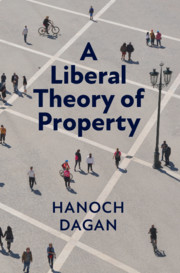Book contents
- A Liberal Theory of Property
- A Liberal Theory of Property
- Copyright page
- Dedication
- Contents
- Preface
- 1 Liberal Property
- 2 Some Basics
- 3 Autonomy and Private Authority
- 4 Property’s Structural Pluralism
- 5 Property’s Relational Justice
- 6 Making Property Law
- 7 Just Markets
- 8 Property Transitions
- 9 Afterword
- Notes
- Index
4 - Property’s Structural Pluralism
Published online by Cambridge University Press: 04 March 2021
- A Liberal Theory of Property
- A Liberal Theory of Property
- Copyright page
- Dedication
- Contents
- Preface
- 1 Liberal Property
- 2 Some Basics
- 3 Autonomy and Private Authority
- 4 Property’s Structural Pluralism
- 5 Property’s Relational Justice
- 6 Making Property Law
- 7 Just Markets
- 8 Property Transitions
- 9 Afterword
- Notes
- Index
Summary
Imagine a proposal for legal reform aiming to simplify and clarify property law, which recommends the adoption of two simple rules. The first rule prescribes that owners have an in rem right to exclude. The second empowers owners (if more than one) contractually to set up their own governance regime. This bill would obviously be radically incomplete, but is that all that is wrong with it? We could think of convenient additions, but is there anything fundamentally necessary still missing for this bill to constitute at least the core of a property regime in a liberal polity?
Keywords
- Type
- Chapter
- Information
- A Liberal Theory of Property , pp. 79 - 113Publisher: Cambridge University PressPrint publication year: 2021

